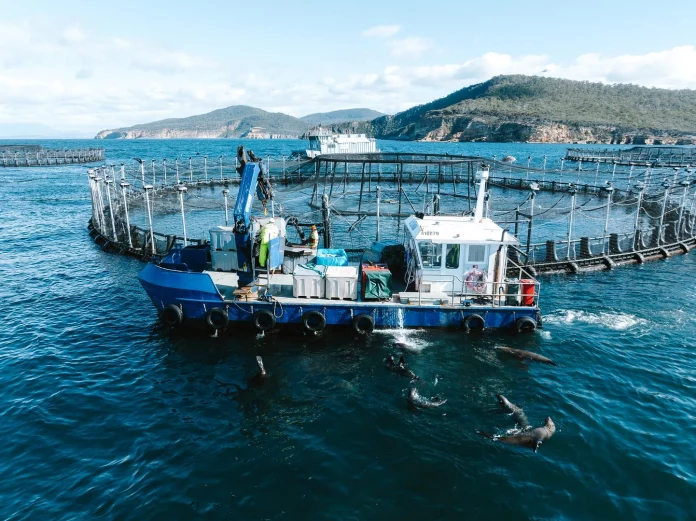A Tasmanian government debrief into last summer’s salmon mass mortality event has found that a lack of accurate and timely information from operators delayed critical decision-making and undermined public messaging.
The review, published on Monday, also highlights coordination and waste-logistics challenges and proposes ten actions, including consideration of an industry code of practice and strengthened reporting rules.
Authorities attributed the event to Piscirickettsia salmonis, with the debrief noting the pathogen is now considered endemic in southern and eastern Tasmanian waters and typically emerges at seawater temperatures of 12–18°C.
The review found no overarching control hierarchy and recorded divergent views between government and industry. Companies saw the initial response as overly regulatory, while agencies judged existing frameworks insufficient. Concerns within industry about exposure to right-to-information requests were noted as affecting internal candour.
Stocking densities in the most affected pens were reported at or below 9.3 kilograms per cubic metre, below the regulated threshold; the debrief said density was not a key driver, although fish crowding at preferred depths may have increased disease transmission risk.
Operators expect imminent federal approval to use the antibiotic florfenicol ahead of the coming summer, after the use of oxytetracycline during the event was described by one company as largely ineffective. Florfenicol is already used in overseas salmon farming.
The document recommends examining Chile’s regulatory approach to P. salmonis and notes ongoing vaccine development in Tasmania, with protection estimated at about 15 months but potentially diminished under repeated stressors such as sea-lice treatment and harmful algal or jellyfish blooms.
The Tasmanian government has promised a study into the environmental, social and economic impacts of the salmon industry and has paused marine farming expansion while the study is carried out. Earlier this year, the state’s Environment Protection Authority said the mortality event had ended, with reporting to continue.


